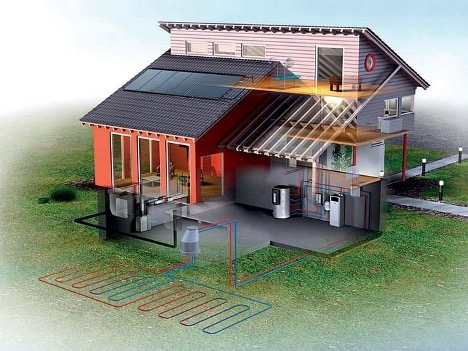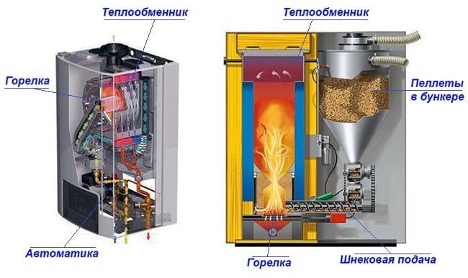Modern innovative heating systems: what are new
The heating sector does not remain stagnant, contributing to increased energy efficiency and convenience in everyday life. From classic radiators and boiler systems to intelligent systems, the dynamics of development are palpable. In this article we will look at what modern heating systems are. We will also tell you what new heating products are already available on the market. The breadth of choice and technological progress are opening up new opportunities for consumers.
The content of the article
Expanding horizons: not only radiators
Radiators are no longer the only solution for heating residential and commercial buildings. Today, new heat supply technologies offer many more alternatives. For example, infrared panels and heated floors ensure efficient heat distribution. They also save energy. Alternative energy sources such as wind and solar energy are also increasingly being used in heating systems.
It is worth mentioning such areas as heat pumps and solar collectors. They not only reduce dependence on traditional energy sources, but also reduce carbon dioxide emissions.It is also important to use smart devices that can automatically optimize energy consumption.
Savings and efficiency: diversification of sources
One of the most promising trends is innovation in heat supply, which is aimed at increasing efficiency and cost-effectiveness. Smart heating systems allow you to control the consumption of thermal energy using specialized applications. They literally adapt to the needs of a particular object. Thanks to such technologies, system optimization occurs almost in real time, which reduces operating costs.
List of new heat sources:
- geothermal heat pumps;
- biomass;
- hydrogen heat generators;
- solar thermal panels;
- chemical heat sources.
How are geothermal heat pumps used?
Geothermal heat pumps use energy from the earth to heat and cool buildings. These systems consist of a closed loop of pipes filled with antifreeze or water, which are laid to a certain depth in the ground. When the coolant passes through this circuit, it either gives off heat to the ground (in cooling mode), or, conversely, absorbs heat from the ground (in heating mode). After this, the already heated or cooled coolant circulates through the heating or air conditioning system, providing comfortable conditions in the room.
The benefits of using geothermal heat pumps are numerous. First, these systems are significantly more efficient than traditional heating methods, reducing energy costs by up to 50-70%.Secondly, they are environmentally friendly, since there is no combustion of fossil fuels and, accordingly, no carbon dioxide emissions into the atmosphere. This makes them a great choice for those looking to minimize their environmental footprint.
What are hydrogen heat generators
Hydrogen heat generators are a relatively new type of equipment that uses hydrogen as a fuel to produce heat. The operating principle is based on the chemical reaction of hydrogen oxidation with oxygen. As a result, a significant amount of heat is released. This reaction occurs in a specialized combustion chamber. There, hydrogen is mixed with oxygen under controlled conditions. The released heat is then used to heat water or other coolant. And later they are distributed throughout the heating system.
These heat generators are of great interest from an environmental and efficiency point of view. Unlike traditional fossil fuel systems, hydrogen heat generators do not emit harmful substances such as carbon dioxide, nitrogen oxides or soot. In addition, hydrogen can be produced from a variety of sources, including using renewable energy sources. This makes them a promising solution for creating environmentally friendly and efficient heating systems.

Complexity is in simplicity: systems intelligence
Intelligent components are becoming an integral part of modern heating. Built-in sensors and controllers are synchronized with mobile devices. This allows you to control the system remotely, maintaining an optimal microclimate in the room.Such systems are equipped with machine learning algorithms, which allows them to automatically adapt to changes in external conditions.
List of smart components:
- Smart thermostats.
- Motion and humidity sensors.
- Control systems via mobile application.
- Automatic coolant flow regulators.
- Monitoring and diagnostic systems.
Prospects and conclusions
In conclusion, I would like to emphasize that innovative heating systems and new heating technologies not only increase the level of comfort, but also significantly save energy resources. Taking into account current requirements for ecology and sustainable development, these technologies are not just a trend, but a necessity. Regular investments in research and development, as well as the introduction of these technologies into mass production, promise further development and improvement of the field.
Thus, today modern heating devices and modern heat supply systems are a combination of efficiency, economy and environmental friendliness, meeting modern challenges and needs. A wide range of possibilities and an individual approach to each project make modern heating systems the most attractive to consumers.





